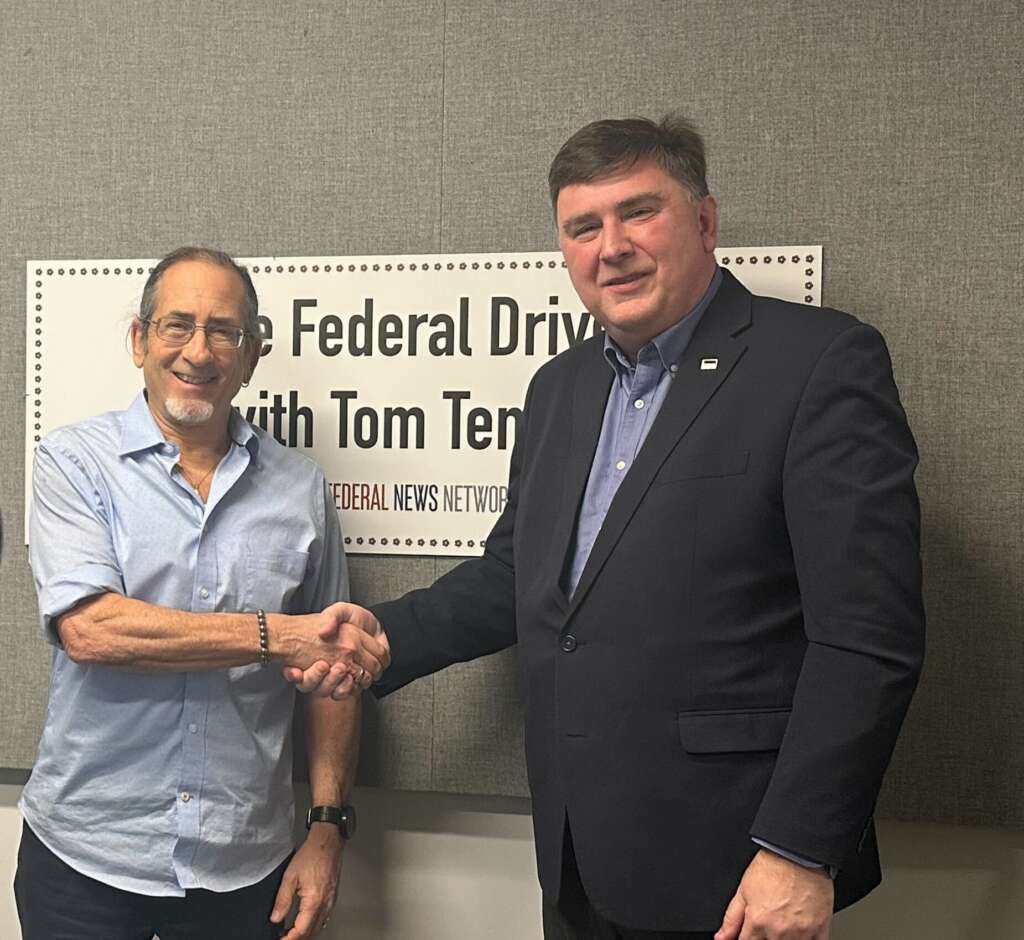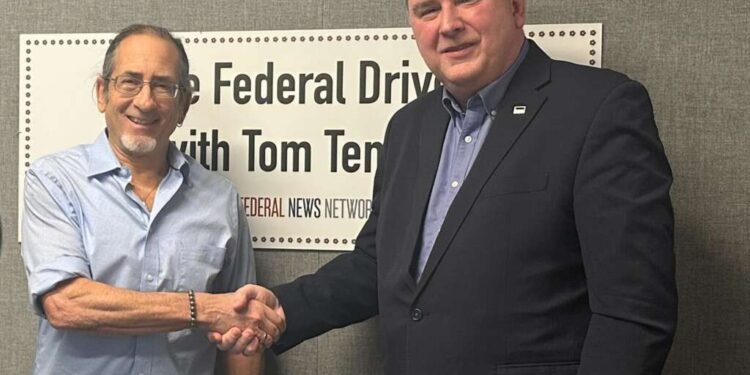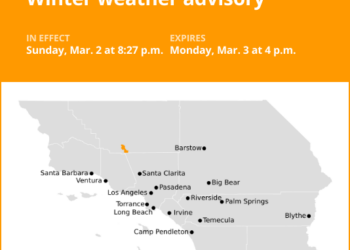
Robots can flip your hamburger or weld together your car. Now they can operate in a vacuum, fixing satellites in orbit. That’s thanks to a program funded by DARPA and carried out by the Naval Research Laboratory. The result is a machine ready for a commercial launch to take into space. The Federal Drive with Tom Temin get more details from the acting director of the Naval Center for Space Technology, Bernie Kelm.
Tom Temin Tell us about this program. What are you trying to accomplish with the overall objective here?
Bernie Kelm So this is a really exciting program for us at NRL. We are developing the robotic servicing of geosynchronous spacecraft payload under the [Defense Advanced Research Projects Agency (DARPA)] funding that will be able to rendezvous, dock service repair, upgrade satellites in space that are not designed to be serviced. So this, we’re very excited, is going to change the way we do things in space. Spacecraft are the only thing in the country fields that are very expensive, never touched, never serviced. Outside of the very limited cases of the Hubble Space Telescope, the International Space Station.
Tom Temin And that was about $1 billion to get up there and fix that.
Bernie Kelm That’s a very expensive mission, yes. And so we’re looking to be able to do that much more cost effectively, have one spacecraft that can serve as many spacecraft over its lifetime. That’s why we’re focused on geosynchronous Earth orbit, where the most valuable real estate in space is for both government, commercial, research, scientific, security spacecraft. Very, very valuable part of space.
Tom Temin And what tends to go wrong? Is there a pattern of failures in that particular field of satellites?
Bernie Kelm Well, I think one of the first services we’re able to provide is just life extension. Satellites are launched with a limited amount of fuel. And when they run out of fuel at geosynchronous Earth orbit, we need to move them to a graveyard orbit so that we can move a new satellite in. Spacecraft don’t have a really good fuel gauge, they don’t know exactly how much fuel they have left. So being able to provide augmented propulsion, maybe add a propulsion backpack to it so spacecraft can have greater maneuverability, being able to let spacecraft stay and operate until they are fully out of fuel. And then we can go take them to the graveyard.
Tom Temin No chance of refueling them.
Bernie Kelm So refueling technology is coming. That’s a harder problem. That is not what DARPA and NRL and Northrop Grumman space logistics we’re working on. But Northrop Grumman space logistics, DARPA’s partner on this mission, is going to be able to install propulsion backpacks. So instead of literally connecting a fuel pump, which is technology that is being worked, be able to put an add on module that can do the same function. So a much easier way to start.
Tom Temin So there is one of these built. Correct?
Bernie Kelm So we have at NRL, we have developed the payload for the RSGS mission. So this payload has two meter long robot arms. They’re both taller than I am. All of the cameras, tools, tool changers, processing sensors that we need to execute this mission, that through DARPA’s partnership is being provided to space logistics who will provide the spacecraft bus to marry the spacecraft and the payload together to be the full mission. And so NRL recently delivered the payload to Northrop Grumman Space Logistics. They are completing it and we’re going to launch early next year.
Tom Temin Got it. And will this then head to one satellite that needs work? How does this work if you have multiple satellites you want to visit?
Bernie Kelm So that’s one of the things that’s really great about this mission. We’re focused on geosynchronous earth orbit. The laws of physics at Geo let us be able to easily move from satellite to satellite. You may have seen a satellite fly over if you’re out camping in your backyard, you may see the space station or you may see StarLink and you can actually look up when they are. Those satellites are in low-Earth orbit. There are several hundred miles above the surface of the earth, and you may see them take ten minutes to go across the sky from horizon to horizon. Geo is much, much higher. It’s a 22,000 miles above the earth. This is actually is an interesting orbit that was first proposed by Arthur C. Clarke. He thought that the world would need three satellites in geo to provide all of our communication needs. We have hundreds and hundreds that provide national security missions, commercial missions, civil space missions. And so at Geo, the satellite will stay at one spot in the sky. So you could have a satellite TV dish at your house that doesn’t have to track and move, it points to a point in space and the satellite will stay there all day. That lets us easily go from satellite to satellite. And so DARPA’s partner will handle the business side of the operations once we’re all in orbit and prioritize which satellites to go to first. We’re optimistic that we’ll be able to service possibly five in a year and hopefully be to do so for 10 years or more. So we’ll be able to provide this value to many satellites.
Tom Temin We’re speaking with Bernie Kelm. He’s acting director of the Naval Center for Space Technology, part of Naval Research Laboratory. And it sounds like the challenge in this is not so much the technology, but the integration of sounds like dozens of technologies and subsystem. So that you have a reliable hole here.
Bernie Kelm That is exactly right. So the base technology for this has existed for a while. We’ve really been working 20 years with the Naval Research Lab to mature this technology to bring it all together. But this is a systems integration problem. How do we make everything work together? The robot arms are commanded at a certain rate. There’s lights and cameras at the end of the robot arms that when they move, the shadows move. The changes what we need to have our machine vision processing. And the whole thing is free floating in zero-G with about 2 or 3 seconds of time delay from ground to space. So we have to build up autonomous operations so that we can execute this mission safely. You can imagine with 2 or 3 seconds time delay, if you were trying to drive home from here, and your car reacted 2 or 3 seconds after you gave it input. Well, this time of day, you’re not getting home.
Tom Temin You’ve answered my next question, which is that latency or that delay of issue of the signal going up and down 22,000 miles and also processing what’s in a card or something. But are people watching and monitoring the monitors anyway while it’s doing its work?
Bernie Kelm Absolutely. We will be very closely monitoring. We will be developing the plan for the space vehicle to execute. The space vehicle will be able to execute some modes of operation fully autonomously, especially when we do our first rendezvous and docking with the satellite. The time delay makes it really prohibitive for us on the ground to be able to react in time. So that’ll be fully autonomous. We’ve demonstrated that in our lab hundreds and hundreds of times to mature that and to be able to have that run on a spaceflight processor, which I don’t know if everybody knows, the amount of processing we can carry in space is much, much less than we have on the ground, that we need spacecraft computers that could survive in a high radiation, high, really challenging thermal environment for years and years.
Tom Temin And this object, the satellite itself, it sounds like it can not only catch up to other satellites in geosynchronous orbit, but when it gets to one, can maneuver in very tiny increments. Otherwise, you could puncture the other satellite or not quite get there.
Bernie Kelm Yes. Being sure that this is a safe operation has really been critical to what we’ve been working to develop it at NRL. And so we need a uniquely designed spacecraft bus that really find control to be able to come in and do the very precise movements, have our spacecraft position ourselves to centimeter level accuracy. And then we use the robot arms to provide millimeter level accuracy of exactly where they want to touch and grapple and dock and provide the servicing.
Tom Temin And what will it do there? Will it screw and unscrew screws? Will it loosen and tighten bolts and that kind of thing?
Bernie Kelm So that’s a little more robust than we’re looking at. We have four primary missions that we’re looking at. The first is to come in and just take advantage of the fact that we have lights and cameras and provide ultra close inspection from centimeter level away. Sometimes we call it NCIS in space. Sometimes spacecraft have failures, and we don’t know exactly what happened. So be able to come in and inspect and see exactly what happened. We could certainly imagine it could be an important national security issue. One of our spacecraft was a failure at wrong times. It could be space environment. So very, very close inspection. Second is to be the tow truck mission that I mentioned earlier, to build a rendezvous dock and help a satellite do a maneuver that it couldn’t make otherwise. The third that will be very hard to predict when it happens, but could be extremely valuable is help with anomaly resolution. Spacecraft are folded up very tight to fit on the rocket to go into space. We have spacecraft in geosynchronous orbit that have a wingspan larger than a commercial aircraft. However, they’re folded up to within just several meters for launch. And every once in a while something goes wrong with that deployment. And our options are limited from the ground that we can send the command again. We can, all right, fire again. Did it work? We could try to fire our thrusters and try to shake it loose. We can try to put the failed component in the direct sunlight. Get it very warm, put it in shadow, get it very cold. But there’s not much else that we could do from the ground since these are very expensive assets that we never touch. And so I can’t predict the next time that it will be needed. But if we look backwards in time, we certainly see many times where anomaly resolution would have saved potentially $1 billion spacecraft. And then the fourth missionary or the one we’re most excited about is being able to upgrade spacecraft that were designed to be upgraded. Right now, no spacecraft have the equivalent of a USB port. However, there are still many upgrades that we can do just by attaching to mechanical structure attached to where the spacecraft was attached to the rocket or where there’s other structural points where we can add new propulsion capability. We could add new sensing capability, we can add new science capability, and so we can help our spacecraft execute more mission at a lower cost.
Tom Temin You can add modules to the outside of it that can do things.
Bernie Kelm Absolutely. And that’s really going to open up a new capability.
Tom Temin And it strikes me that the existence of this new robotic facility will maybe influence how future satellites might be designed.
Bernie Kelm That is exactly our goal. Certainly, we’ve been facing a chicken and the egg problem. There are no spacecraft on orbit, again, other than the International Space Station and Hubble that are designed to be serviced. And there are no spacecraft that service vehicles that are designed to be serviced because there are no spacecraft that are designed to be serviced. So DARPA’s very astute and had us start tackling the problem of how do we service satellites that were not designed to be serviced. If we are very successful, we put ourselves out of business, and that’s a great outcome by showing that commercial servicing robotic servicing is viable are very conservative spacecraft engineers can start to change the way they design spacecraft so that we can start to make them modular, start to make them so that they have refueling ports so that refueling and actual fuel transfer is easier to do. Make them so we can upgrade their computers and sensors.
Tom Temin Put that USB port on there.
Bernie Kelm Put that equivalent in there so that we could install something. I’m sure we have a million users of USB today that the original designers didn’t think of. They might have thought, all right, keyboard, mouse.
Tom Temin Sure. And a final question. Does the program envision making multiples of this robot?
Bernie Kelm So that would be best case. That is not our plan at the time. We’re going to get this first one up, and then see what happens. What I do really envision for the future is that spacecraft servicing is the beginning of the revolution. We at NRL are supporting national efforts in this term of [In-space Servicing, Assembly and Manufacturing (ISAM)]. So servicing is the first step, but ultimately we can use these same technologies to move on to build things that are larger than we could ever fly today. Do assembly, build large trusses, give the next generation of space telescopes greater and greater capability to look deeper and deeper in space, build applications that have larger structures that benefit all domains of our space capability. And then ultimately, manufacturing. Can we build things in space that are for use in space or for use returning to the ground? I’ve recently been part of an interagency working group that’s looking at microgravity research, and I’ve been learning about all of the absolutely astounding research that’s happening on board the ISS with pharmaceuticals, fiber optics, next generation chip generation, things that will really open up quality of life, expand the commercial industrial base and really give us great new capabilities both on the ground and for things that are designed to actually execute in space. So servicing is the beginning, and we’re looking to what comes next.
Tom Temin All right. And finally, how did you come to this type of work? Give us the 60 second version of your background.
Bernie Kelm So I’ve been at the Naval Research Lab my entire career. It was my safety interview. I had no idea that the Navy had a really robust space program doing innovative research right in Washington, D.C. Working it at NRL has been fabulous that we are researchers. I recently briefed two star general, Admiral O’Connell, retired, and after briefing him on our entire team, he said, Wow, what a great group of patriot scientists. And I said, that is a fantastic compliment, sir. That is what we are. We are people that work our entire career to advance science for national benefit. A lot of that benefit directly impacts national security applications, but there’s no shortage of applications that we also spin off. And we love to take what we develop first and help commercial industry and academia and civil space. And so I’ve been there my entire career and have just moved up the organization, and I’m really proud that I get to both represent, lead and help such a really great team of people at NRL.
Copyright
© 2025 Federal News Network. All rights reserved. This website is not intended for users located within the European Economic Area.







